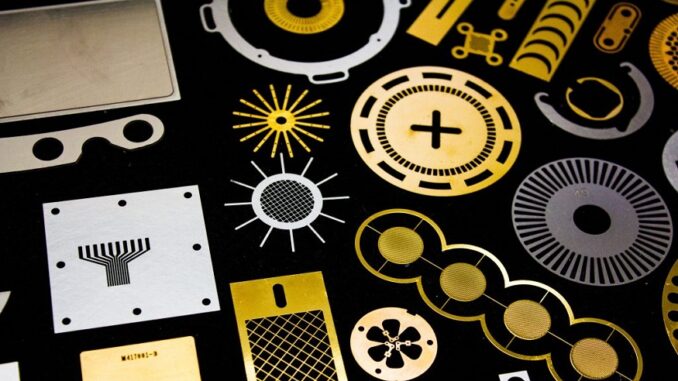
Photoetching, or chemical etching as it is sometimes called has changed many industries including aerospace medicine and manufacturing. This technology uses computer programs in combination with photography to provide beautiful design patterns on metal surfaces. The resulting products are usually satisfactory and attractive to customers.
If you want to generate your products by photo etch, then certainly you need to know how the process works. The chemical etching method is highly reliable and flexible. You can create many products through it. This article will introduce the photo etching process in detail.
Historical Background Of Photo Etching
Exploring the roots of photo etching provides insight into its evolution over time. Back in the 1800s, skilled craftsmen and artists employed light-sensitive chemicals to transfer their intricate designs onto metal plates. This historical technique has undergone notable transformations through the years.Today, photo etching is more developed, helping industries to create better designs on their end products.
How Photo Etching Works
1. Creating A Photo Tool
The process of creating a photo tool isn’t challenging. Customers only need to send their desired designs to a manufacturer, using the .DWG or.DXF file. These designs can be sent through email or mail. Once the design has been sent, the technicians will convert it into a photo tool, and use it to create the end product. Technicians may recommend redesigns or adjustments depending on the customer’s goals.
2. Selecting And Preparing Metals
Not all metals can be used for every project. Some projects require lightweight metals, while others require stronger materials. The technicians will assess your project needs, and recommend the right metals to use. Some common materials that they’re likely to suggest include nickel alloys, stainless steel, copper alloys, and aluminum alloys. Before chemical etching, the material has to be properly prepared. The preparation process includes cleaning the metal and cutting it into smaller sheets. Oxidation and oil are also eliminated from the metal sheet to minimize the chances of wrong reactions.
3. Coating The Metal With Photoresist
A photoresist is a photo-sensitive material that resists acids. It’s applied to the metal using specialized equipment. It protects the etched part of the material from reacting with the chemicals. It also ensures that the designs are precisely mounted on the metal surface.
4. Exposure To UV Rays
After coating a piece of metal with photoresist, it’s placed into a machine that exposes it to UV rays. The machine consists of two pieces of film containing the designs that were sent by the customer. When the UV light touches the resist, it becomes polymerized as the other metal parts remain soft.
5. The Etching Process
The chemical etching process depends on etchants. These are chemicals used to make designs pronounced on a piece of metal. Using the right etchant gives a successful machining process. Once the etching process is done, the end product is inspected to ensure there are no defects. Other value-added procedures such as plating, laserwelding, and soldering may also be performed at the customer’s request.
The Bottom Line
The etching process was created to offer solutions to several manufacturing problems. Contact a reputable etching company if you want your products to be created with high precision.

Leave a Reply
You must be logged in to post a comment.